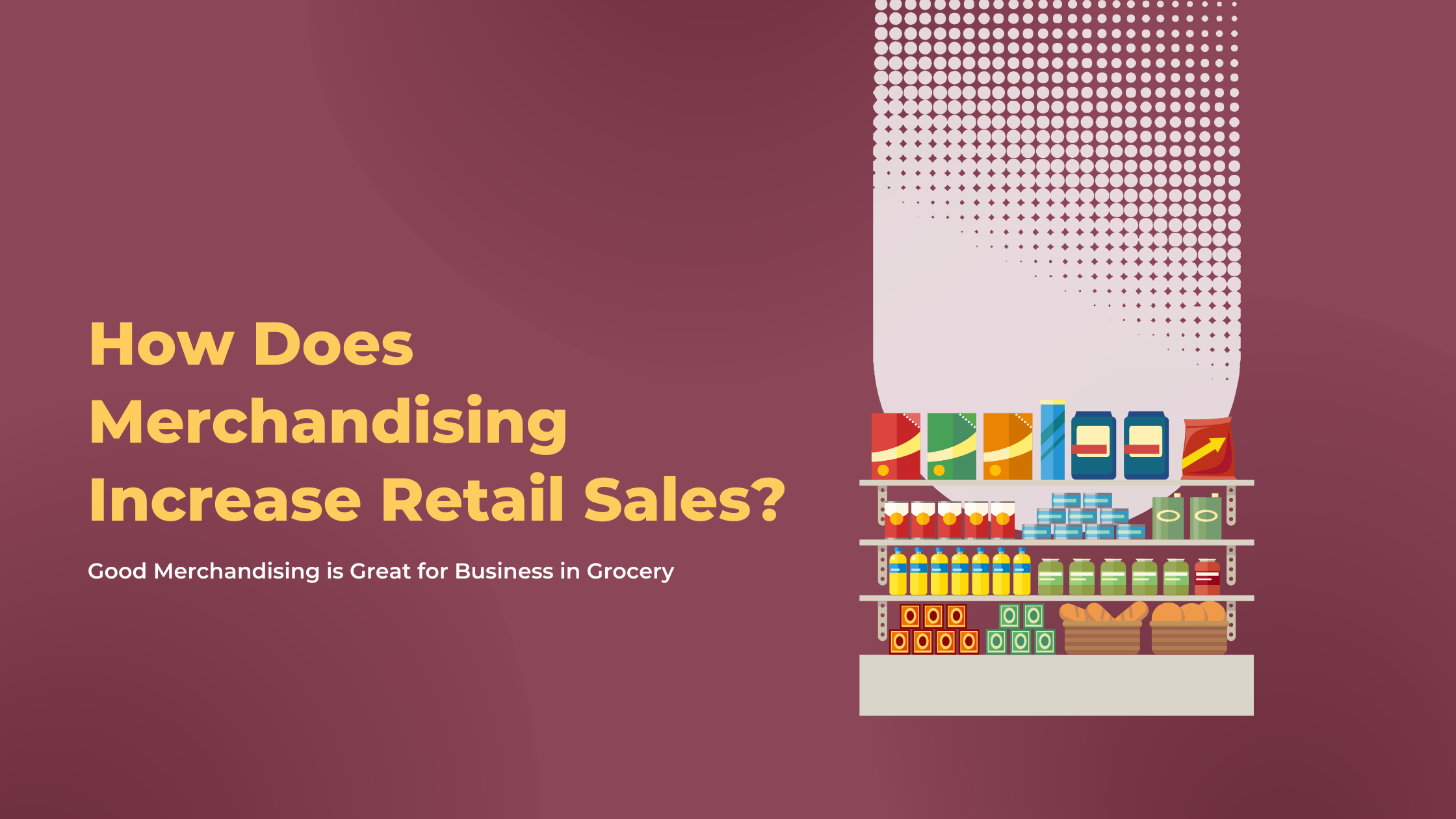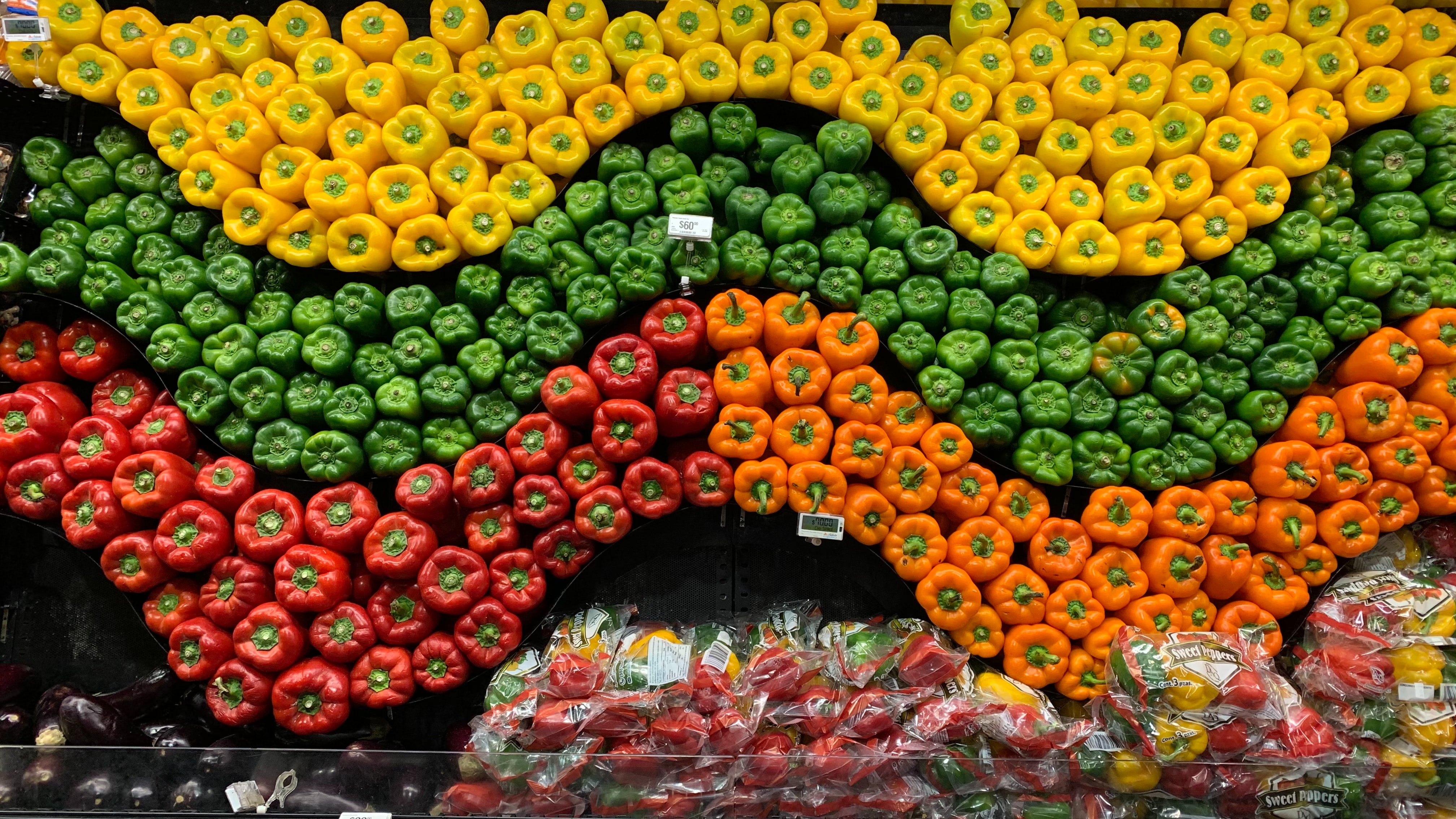How Does Merchandising Help Increase Retail Sales in Grocery?
It’s a competitive and saturated market right now — both grocery stores and CPG brands are working hard to not only entice customers but to make a purchase too.

However, retail customers are now savvier than ever, so retail buyers and store managers need to pull out all the stops to increase their store’s basket spend.
This is where merchandising comes in. While in-store merchandising used to comprise eye-catching (but simple) posters and shelf tags, grocery stores can now use digital screens, in-aisle cooking displays, and even olfactory marketing to boost their profit line.
Let’s take a look at the power that merchandising has to increase the basket size of every shopper who comes into the store.
How does merchandising help increase sales?
There’s a saying in marketing that the most effective ideas are often the simplest, and in-store merchandising is a great example of simple marketing at play.
When done right, grocery merchandising doesn’t have to be super sophisticated and impressive (although some executions will be). Merchandising has the ability to attract and persuade customers by performing the following tasks:

- Merchandising makes it easy for shoppers to find what they want. With clear, well-placed signage in-store, shoppers won’t be overwhelmed by choice, and they’ll understand why similar items are grouped together.
If you merchandise well, you can help shoppers to complete their shopping journey within your four walls — and never give them a reason to visit a competitor!
- Merchandising can help you cross- and up-sell, as interesting displays can draw the customer’s eye to something they weren't expecting to buy.
This works well for new, innovative products or updated versions of much-loved items, such as new flavors, features, or a branch out into certain ethical lifestyles and values. - Merchandising can make the in-store experience more appealing.
They say that good design is invisible, so if you merchandise well, then shoppers will just enjoy being in your store, even if they can’t explain why. The longer they stay in-store, the more likely they are to spend, especially on something unplanned.

Grocery merchandising top tips
You want your products to fly off the shelf — and so do we!
Even when you’re confident that you’re selling the best product(s) ever made, how you display these items on-shelf still matters to consumers. In fact, how you display your goods is just as influential when it comes to securing sales as the product itself.
Below we’ve rounded up some of our favorite tried-and-tested tips to showcase your products in their best light and increase your sales.
Maximize footfall areas
Store layout is crucial. Displays for new products and brands tend to do well at the end of aisles, where they’re less easy to pass by.
That said, the areas of highest footfall are another great place to double down on your merchandising — promotional merchandising in particular. Try to avoid placing the items you want to sell quickly in the middle of regular aisles, as this could leave them overlooked as a result of information overload.
Use cross-merchandising
In terms of success rates, cross-merchandising is one of the most important ways of merchandising in the US.
Cross-merchandising involves placing complementary products together in a single display to entice customers to make multiple purchases. An example would be a household brand name launching a new product and placing its most successful product on the same display. Or a retail store merchandising all the Halloween-themed items together in the final weeks of October.
The idea is that a customer will be drawn in by a regular purchase, then notice the new product and buy that as well. Brands can also collaborate on displays, offering complementary products. This could be anything from dips and chips to cheese and wine! It will save customers time, too so they don’t have to visit an additional part of the store for individual items.
 Design with the Rule of Three
Design with the Rule of Three
In design, odd numbers often work well — and three, to quote De La Soul, is the magic number.
You could try cross-merchandising (as above) three ranges of items or select three sets of multiple items in different sizes or colors. Place the largest or most popular in the middle and place the other two around it like a pyramid. Visually, it looks appealing to the customer, and it remains easy to understand.
Remember, you want the customer to purchase all three items instead of just one.
Declutter
Too much choice is overwhelming for anyone — and that goes double in a grocery store. People are usually short on time and simply want to grab what they need and go. When it comes to groceries, too much choice means customers will either buy their usual item, opt for the cheapest item available or choose an offer.
This means that less is more when it comes to the layout on your shelves.
Make pricing clear
Much as we see with choice, customers don’t want to have to search high and low for the price tag of an item. While brands often don’t have control over this in a store, the store itself is in charge of maintaining these displays. Clear pricing is another step toward making the entire shopping experience easier for the customer.
Use a promotion
Promotions and merchandising often go hand in hand — this can be anything from a buy-one-get-one-free (BOGOF) offer to handing out free samples.
Offers are enticing for all as it appears that you’re getting good value for money, regardless if that’s the case or not. Many brands advertise for others on their packaging, such as money-off coupons, often for experiences rather than physical items. All of these features add up to an appealing product.
Rotate every two weeks
Change needs to be handled delicately in a grocery store. As we mentioned above, grocery shoppers are creatures of habit, and if you change up your layout too dramatically, then they may walk out empty-handed.
That said, it’s a good idea to switch up your merchandising campaigns every two weeks or so. This helps inspire customers with new products and keeps your store feeling fresh overall.
Think seasonally
Seasonal aisles always work because you’ll group similar items together on one theme. Customers will often buy in bulk down these aisles because it may mean one large shop. These aisles are also useful for word-of-mouth.
For example, during the Christmas period, customers will tell family and friends about a new product or offer. That will, in turn, increase footfall in your store. Try to think of holidays, religious events, and festivals as well as local themes too. It doesn’t always have to be a specific event; you could highlight just one brand across multiple product categories.
Appeal to the senses
While store displays are mostly visual cues, you can involve the other senses too. Imagery can still appeal to the tastebuds if done well. Embracing technology on your display works wonders, too, as customers can see the products in action or as video advertisements.
Think about the bread selection in a grocery store. It’s most commonly found at the back, often central. The smell fills almost the entire store and entices customers to make their way through most of the store to get there.
Work with an experienced partner
Bringing in a merchandising expert can take your store sales to the next level.
And, at Buffalo Market, advising on merchandising is a big part of what we do!
We specialize in fast-moving brands that benefit from our higher level of in-store service — attracting new customers and creating engaging displays to boost your sales. Work with the experts by reaching out to our sales team today.




